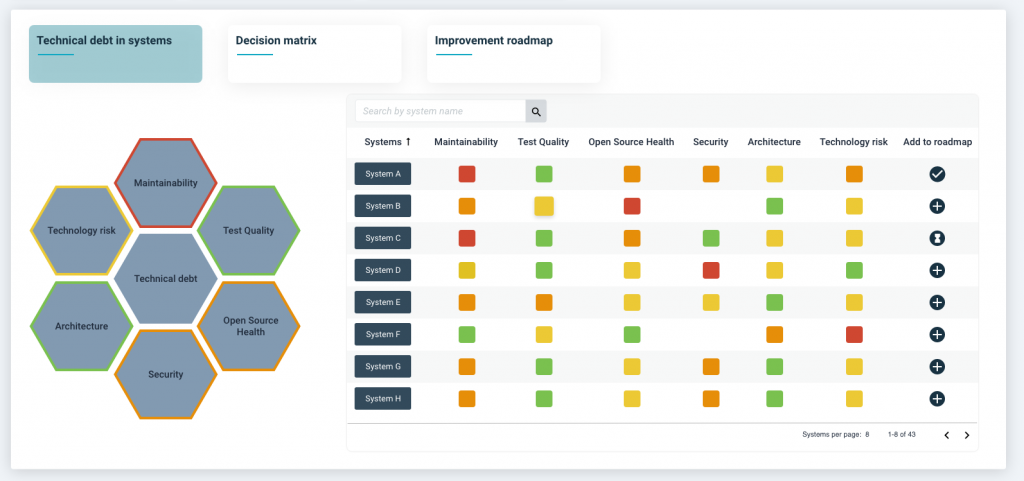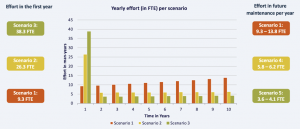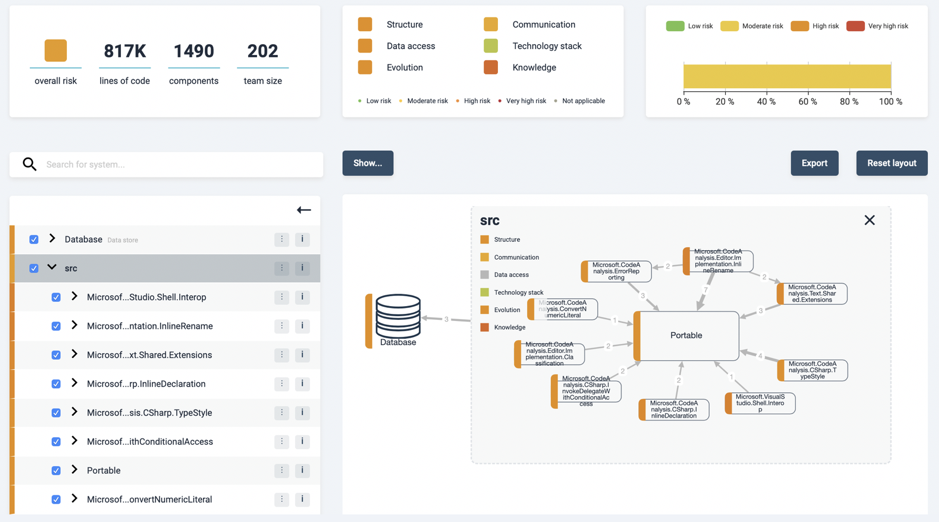Organizations have long been under pressure to evolve their software landscapes in a way that aligns with ever-changing business demands.
IT teams everywhere want to make the leap to modernization, but the initiative presents enormous challenges and risks. In fact, 74% of organizations fail to complete legacy modernization projects, according to a recent report by
Advanced.
To add yet another complexity to the mix, there are so many different roads leading to modernization. The question then becomes how to choose the
right one, around all the costs and pitfalls?
The short answer: With clear insight into your architecture quality and risks before even making a start.
Successful modernization requires upfront insight into architecture quality and risk
Take sailing, for example. A crew never sets out without advanced knowledge about the trouble spots along the route. They also need to keep a close eye on changing conditions throughout the journey to stay the course.
The same holds true for modernizing legacy systems. The technology leader first needs facts about the quality and risk of the software architecture in order to map a successful route to the target state – along with continuous data throughout the life of the program to ensure progress.
A fact-first, 3-phase approach
We’ve been guiding our clients in large-scale modernization programs for two decades, taking a “fact-first” approach to assess architectural composition, current system build quality, data stores, and active knowledge of development teams. Those findings are then translated into risk-based roadmaps, mapping a route to transformation around the danger zones.
We believe the successful transformation program comprises three phases:
Phase 1: Prioritize your systems for modernization
During the planning and budgeting phase, teams need a comprehensive overview of the entire portfolio to identify which systems should be modernized first. Combining these with the business priorities will help to define the best order and accommodate for the appropriate budgets.
To help provide our clients with this insight, we’ve developed a lightweight quick scan that evaluates select software quality aspects against the SIG benchmark. Based on those results, a prioritized list of legacy modernization candidates is created from a technical perspective.

Phase 2: Determine modernization scenarios based on measurements of key architecture risks
Once the system(s) has been slated for modernization, the overall quality of its architecture needs to be brought to light. To do so, we’ve identified six key architecture risks which should be measured before you can determine the smartest modernization scenario:
- Structure
- Communication
- Data Access
- Technology Stack
- Evolution
- Knowledge
Each architecture risk represents the degree to which the system can be easily changed and/or evolved, which stems from how tightly coupled the components are within.
The measurements of each can be automated using the SIG architecture quality model, which we’ll explain further in
part 2 of this series.
The model’s results as well as a functional decomposition allow for modernization scenarios, such as rebuilding the whole system, or refactoring specific parts of it, as well as estimation of the cost, effort, and time for each.
Prioritization of refactoring activities must be ROI-focused. Resources should be allocated (based on the identified risks) to the components that will deliver the highest return on the effort, allowing development teams to make the biggest impact from the available budgets.

During this second phase, not only is the right modernization approach identified, but a detailed project plan is also developed to manage it.

Once the most favorable scenario has been identified and the plan created, the actual execution can begin.

The outcome of the automated architecture quality measurements can now be used to focus on the connections between the critical components to be replaced first.

Phase 3: Monitor build progress continuously to stay the course
By now, you’re equipped with a fact-based, risk-managed roadmap to modernization, having had facts about your system architecture translated into the optimal scenario. But just as the sailing crew has to stay on top of ever-changing conditions at sea, the IT team needs continuous insight in this third phase of modernization to assure progress to the target state.
Both the legacy and new code and their dependencies should be monitored continuously in a software assurance platform, like
Sigrid from SIG, to maintain a clear overview and accurate picture of the progress made as well as the work still left to be done. As another important benefit, Sigrid also indicates the refactoring candidates in the legacy system with the largest impact on the software quality score, helping development teams prioritize the work in their sprints.

Final thoughts
Organizations spend considerable time and financial resources maintaining legacy systems, but fundamental changes are inevitably required to improve process efficiency, create better ways of serving customers, and capture opportunities for future growth.
The three-phase approach explained in this article has proven its value for a wide variety of technology use cases, from transformation of large Cobol monoliths to implementing low-code applications as replacements for older technologies, spanning industries in both the public and private sectors.
The organizations who choose this fact-based, risk-managed path will find themselves well on their way to a foundation for future innovation. Our team is ready to support your journey.
Read part 2 in this series: Legacy Modernization: 6 architecture risks that could derail your program
About the Authors
Lijin Zheng is a Consultant at SIG specializing in legacy modernization.
Michel van Dorp is Vice President of Strategic Partnerships at SIG, working with global consulting and technology firms to execute on efficient, cost-effective legacy modernization programs.









